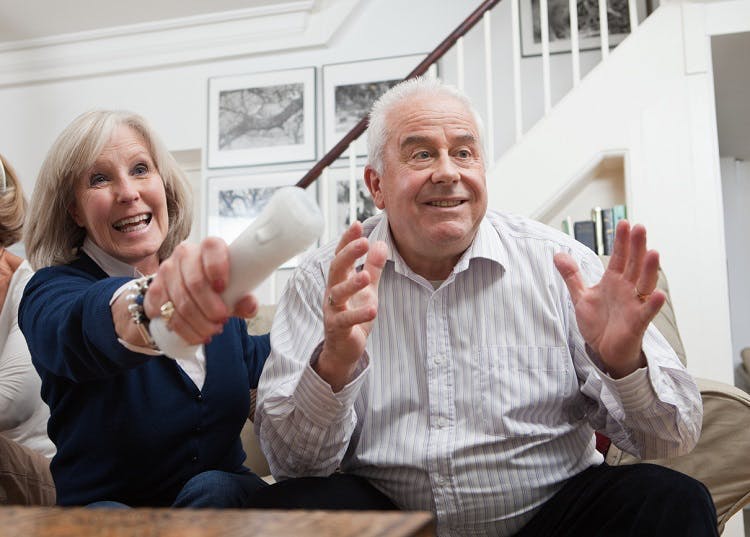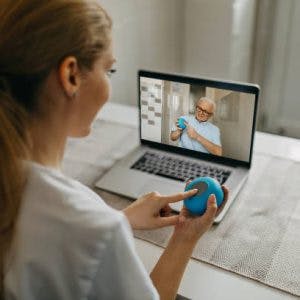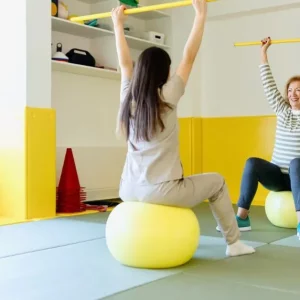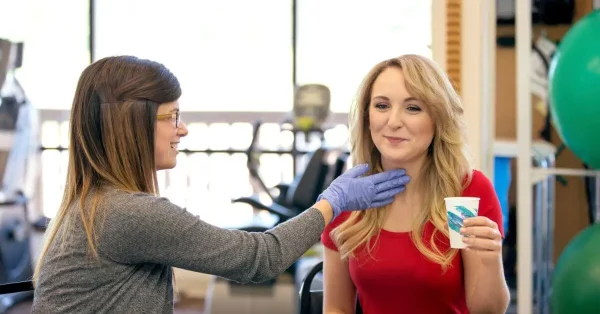In recent years, there has been a growing interest in using rehabilitative video games for stroke patients. By using options such as virtual reality systems, interactive gaming devices, and specialized apps, stroke survivors can boost recovery in a way that is both engaging and effective. The best types of video games for stroke patients vary depending on which functions have been affected.
This article will introduce multiple types of video games that may be used in conjunction with conventional therapy to promote recovery. A detailed explanation of the benefits of video gaming for stroke recovery and how video games may encourage improvements is also included.
Use the links below to jump directly to any section of this article:
- How can video games encourage stroke recovery?
- Benefits of video games for stroke patients
- The best video games for stroke recovery
How Can Video Games Encourage Stroke Recovery?
In order to promote recovery after stroke, it is important to repetitively practice targeted skills. This is because neuroplasticity, or the brain’s ability to rewire itself, is activated by consistent and repetitive practice.
The brain is constantly adapting to develop more efficient pathways for frequently practiced skills. Because video games can be so engaging, they can encourage survivors to practice affected skills over and over.
Although video games are generally seen as more popular with younger generations, they can be an effective and engaging way to promote stroke recovery at any age. Personalized video game recommendations can be provided by the survivor’s rehabilitative team, including speech, occupational and/or physical therapists.
While some individuals are happy to try video games as a form of stroke rehabilitation, others may be uncertain about using video games due to price or concerns regarding the game’s focus or difficulty level. Checking with local libraries can help ease these concerns, as video games and gaming consoles are often available to borrow free of charge.
Benefits of Using Video Games for Stroke Patients
Research on the effects of using video games to promote stroke recovery have found a wide range of benefits. Depending on the focus of the game, survivors may improve physical, cognitive, and even emotional skills. This may include improvements in:
- Gait (manner of walking)
- Balance
- Arm functions
- Physical activity levels
- Attention
- Spatial cognition
- Memory
- Mental health
- Depression
- Anxiety
- Quality of life
Given their widespread benefits and minimal drawbacks, video games for stroke patients are gaining popularity as rehabilitative tools. However, most studies do recommend using video games in conjunction with more conventional therapies for optimal results.
The Best Video Games for Stroke Patients
The most effective video games for stroke patients are engaging and encourage repetitive practice of targeted tasks. Practicing specific tasks again and again stimulates the brain, promoting adaptive rewiring through neuroplasticity.
The list below outlines seven enjoyable and engaging video games that can help stroke survivors as they pursue recovery.
1. Brain Age
Video games that exercise cognitive skills, such as memory and concentration, can help improve critical thinking after stroke. The Brain Age series, which most recently came out with a Nintendo Switch Brain Training game, is full of brain-boosting activities that can play be played independently or with friends.
The cognitive exercises used in this video game are inspired by the works of neuroscientist Ryuta Kawashima, and focus on improving processing speed, short-term memory, and self-control. By consistently practicing tasks involving these functions, the brain may be able to adapt and recover these skills.
2. Nintendo Switch Sports
An upgraded version of Wii Sports, Nintendo Switch Sports is a video game that can be extremely helpful for stroke survivors trying to regain movement. Through interactive games such as bowling, tennis, and soccer, Nintendo Switch Sports provides both entertainment and the opportunity to practice various physical skills.
Many of the sports included in this game can be played in either seated or standing positions. With a caregiver or therapist nearby to supervise, some individuals may benefit from playing while standing to improve their balance skills. Others may prefer to stay seated if they are focused primarily on improving arm functions.
Furthermore, while most of the sports included involve moving the arm and hand, there is also an option to practice leg movements by strapping the controller to the thigh when playing soccer (football). This can provide an exceptional balance challenge, but individuals who are at risk of falling should only try this with a caregiver nearby for safety.
3. MusicGlove
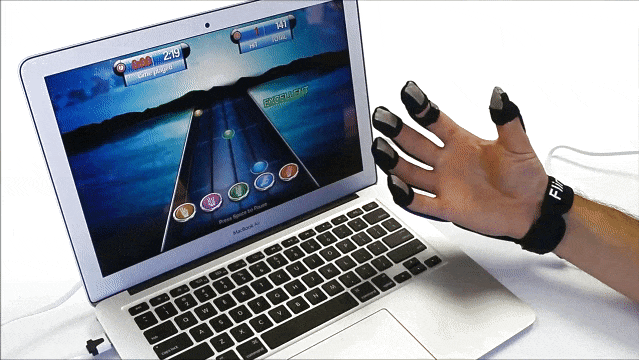
Focused specifically on improving hand functions after a stroke, the MusicGlove is an excellent rehabilitation device that targets the fingers. It combines video gaming, music, and hand therapy to encourage individuals to perform the high number of repetitions necessary to improve hand functions after stroke.
While it is similar to Guitar Hero, MusicGlove is designed specifically for stroke survivors with hand weakness. By encouraging users to practice tapping their fingertips together, MusicGlove can improve the ability to perform everyday tasks, such as twisting a doorknob or picking up an object.
4. FitMi
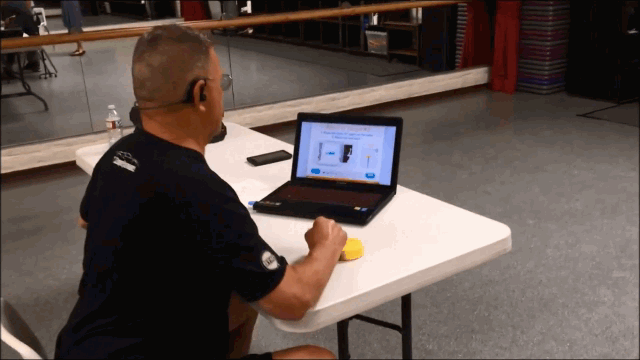
Stroke survivors who want to improve movement throughout their entire body may benefit from using programs such as FitMi. As a video game-like neurorehabilitation device, FitMi includes various exercises that target the hands, arms, core, and legs.
By encouraging individuals to perform a certain number of rehabilitative exercises within a given timeframe, FitMi provides an engaging way for survivors to repetitively practice targeted movements. FitMi can also adapt to the individual’s ability level for an optimal challenge to keep survivors motivated without getting overwhelmed or discouraged.
5. Virtual Reality
Virtual reality (VR) video games can serve as a form of escapism for stroke survivors by allowing them to immerse themselves in a world of limitless possibilities. By wearing a headset, survivors can interact with a variety of virtual simulations that mimic the real world.
Virtual reality video games for stroke patients provide a multisensory experience that motivates users to perform the task-specific exercises necessary to promote neuroplasticity. Depending on the game, virtual reality can help stroke survivors improve both physical and cognitive skills.
For example, a virtual reality game called Beat Saber involves rhythmic upper body movement, combining beneficial aspects of gaming with music therapy to enhance arm functions. Other games, such as Reh@City, can simulate real-world scenarios in a safe environment. By participating in different tasks, such as visiting a virtual supermarket, post-office, bank and pharmacy, individuals can improve cognitive functions and participation in daily activities.
6. CT Speech and Cognitive Therapy
The CT Speech and Cognitive Therapy App is a video game designed to be used on a phone or tablet to provide easy access to cognitive training activities. The app includes over 100,000 speech and cognitive training exercises that can help survivors develop a wide range of skills, including:
- language
- memory
- listening
- reading comprehension
- problem solving
- attention
- visual processing
Additionally, the game’s smart artificial intelligence (AI) technology adapts to the user’s ability level for a personalized rehabilitation experience. As skills improve, the recommended exercises will also increase in difficulty.
7. Differences
Differences is a free app that encourages stroke survivors to develop their visual processing and attention skills. In this game, two nearly identical images are presented. Individuals are then challenged to see how many differences they can spot between the images. This game is ideal for stroke survivors who are trying to develop their concentration skills because it there are multiple difficulty levels and no time constraints.
Each of these games has its own unique set of benefits. Survivors should talk with their rehabilitative team to discover which video games for stroke patients may be most effective for their specific needs. While video games may be helpful on their own, it is often most effective to use video games as a way to enhance results from conventional therapies.
Understanding Video Games for Stroke Recovery
Video games can serve as an effective form of rehabilitative therapy for stroke survivors. To promote recovery after stroke, individuals must play games that engage the skills that were affected by their stroke.
For example, if a stroke affects memory, individuals must consistently practice video games that engage memory skills. This helps the brain understand that there is a demand for memory functions, and encourages adaptive reorganization of neural circuitry.
Many stroke survivors struggle to stay motivated and perform the repetitions necessary to influence neurological adaptations. Using video games for stroke patients can help individuals stay engaged and challenged enough to keep practicing.

